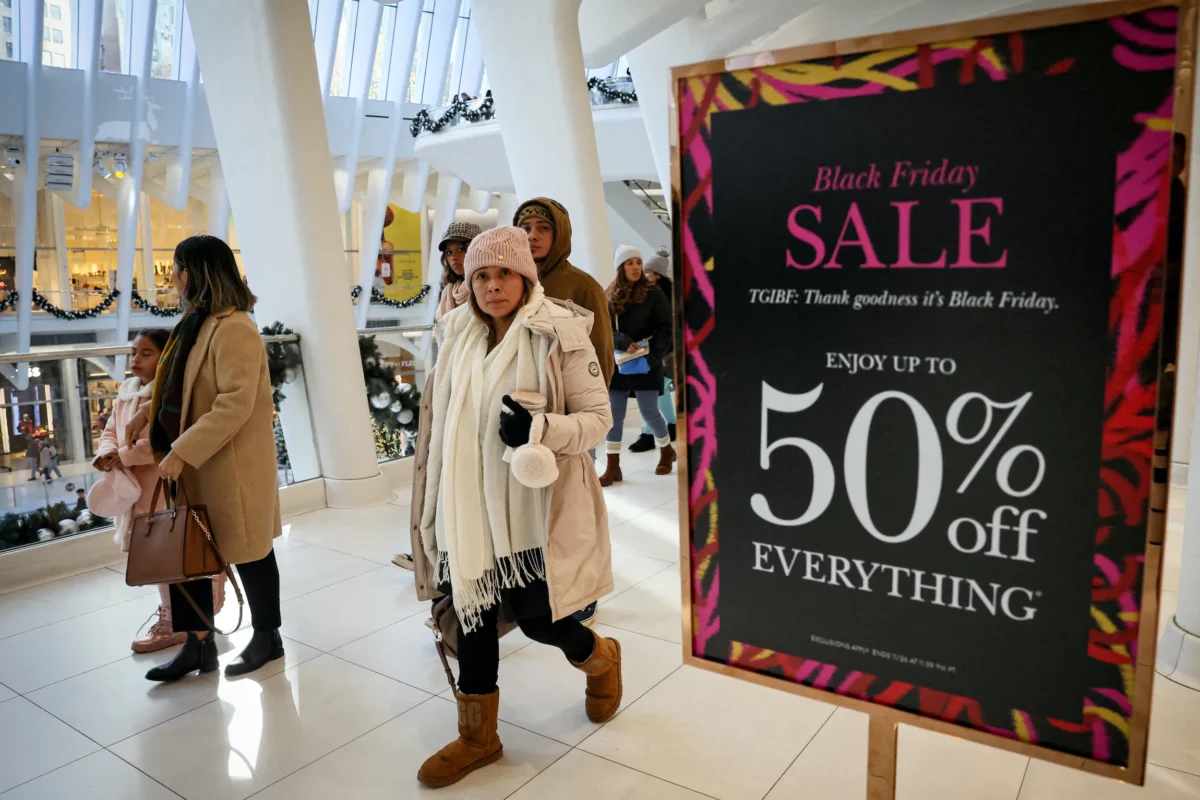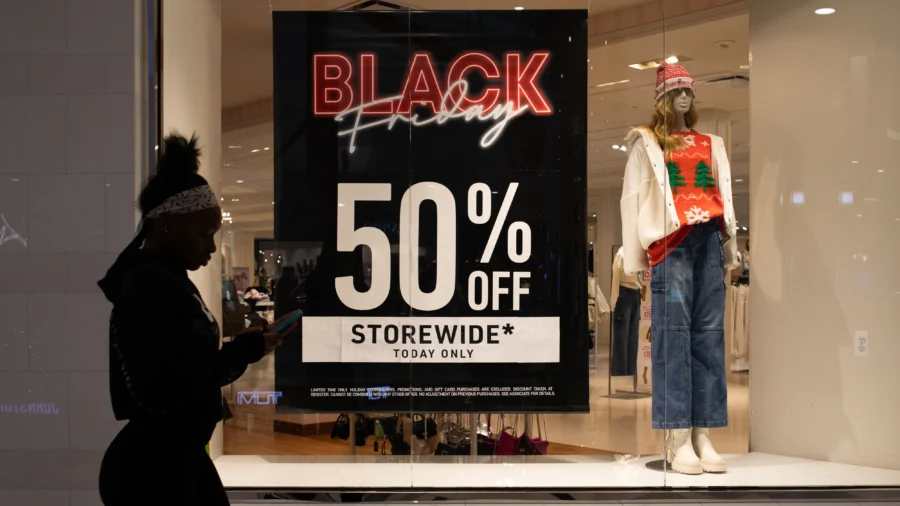Online shoppers spent a record $63.2 billion in Thanksgiving’s shopping, finding lower prices on electronics and toys despite the economic uncertainty.
This new high was a 7.8 percent increase during Cyber Week, or the five days from Thanksgiving through Cyber Monday, according to data from Adobe Analytics, outstripping initial expectations for a 5.4 percent rise—signaling a strong holiday shopping season.
The best discounts, and the merchandise that was most popular, was in televisions, clothing, toys, other electronics, and furniture. There were price cuts of 30 percent on electronics and 19 percent on furniture, said Vivek Pandya, lead analyst at Adobe Digital Insights.
According to data from Shopify, the average cart price was $110, with items similar to the items mentioned by Adobe, plus shoes, jewelry, and decor, reported FOX. The e-commerce platform found that around 80 percent of the purchases were through a mobile phone, and only 20 percent through a desktop computer.
U.S. retailers using Shopify’s point-of-sale payments grew by 33 percent, the company said, compared with data from 2022.
During the Thanksgiving weekend alone, shoppers spent $38 billion online.
Industry forecasters, including Deloitte and retailers like Walmart and Macy’s, warned of cautious consumer spending due to sticky inflation constraining budgets. But blockbuster deals rolled out from Thanksgiving Day through Cyber Monday proved them wrong.
Sales on Cyber Monday jumped a better-than-expected 9.6 percent to a record $12.4 billion, as shoppers clicked “buy” on Hot Wheels toys, PlayStation 5, smart watches, and kitchen appliances.
“The record online spending across Cyber Week … shows the impact that discounts can have on consumer demand, especially with quality products that drove a lot of impulse shopping,” Mr. Pandya said.
Adobe said discounts peaked at 31 percent for electronics and at 27 percent for toys on Cyber Monday, which is typically the biggest online shopping day in the United States.
In a bid to stretch their Christmas budgets, shoppers are also leaning on Buy Now, Pay Later (BNPL) services such as Klarna or Affirm to avoid the extra fees and interest that come with credit card payments.
A record $940 million worth of purchases were made through BNPL on Cyber Monday, surging 42.5 percent from last year and trouncing Adobe’s earlier estimate for an 18.8 percent jump.
Payments firm Block also noted that BNPL transactions through Afterpay surged 19 percent over the weekend, while Klarna said it saw a 29 percent increase on orders placed by U.S. shoppers on Black Friday.
Strong online traffic on Black Friday demonstrated a notable pattern of shoppers putting time and effort into selecting the lowest-cost, best-value merchandise, said Rob Garf, vice president and general manager for retail at Salesforce, which tracks data flowing through its Commerce Cloud e-commerce service.
Despite an earlier start to retailers’ holiday promotions this year, there weren’t a lot of great deals initially, Mr. Garf said. Yet “consumers were patient, diligent, and they played a game of discount chicken. And they won once again.”
On Black Friday, the day after Thanksgiving, retailers “stepped up the discounting” to roughly 30 percent on average in the United States, he said. And “consumers clicked the buy button,” spending $16.4 billion online in the United States and $70.9 billion globally that day, according to Salesforce.
“We saw a big spike,” Mr. Garf said, adding that the strong Black Friday online outlay was a sign that the overall tally for the entire Cyber Week would be higher.
Salesforce says it derives its benchmarks for online traffic and spending from data flowing through its Commerce Cloud e-commerce service, which it says provides a window into the behavior of 1.5 billion people in 60 countries traversing thousands of e-commerce sites.
Other firms, such as rival Adobe Analytics, use different measurements to gauge online shopping patterns, and the total might differ. Adobe provides merchants with Experience Cloud, a service which powers their e-commerce platforms, giving Adobe a window into aggregate transaction data at 85 percent of the top 100 internet retailers.

“The online retail sector is one of the few where the consumer is a bit more in the driver’s seat,” Mr. Pandya said, particularly with toys and seasonal holiday merchandise.
“There are a lot of online merchants vying for their dollar and they can easily compare prices,” he added.
Mastercard, which measures retail sales across all forms of payment, said e-commerce sales rose 8.5 percent on Black Friday, while in-store sales rose 1 percent.
“Digital grew dramatically during the pandemic and then it had a reversion to the mean, when people went back to stores,” said Steve Sadove, senior adviser for Mastercard and former CEO of Saks Inc. “Now, you are seeing an acceleration in digital, once again. It’s becoming more important.”
Reuters contributed to this report.

